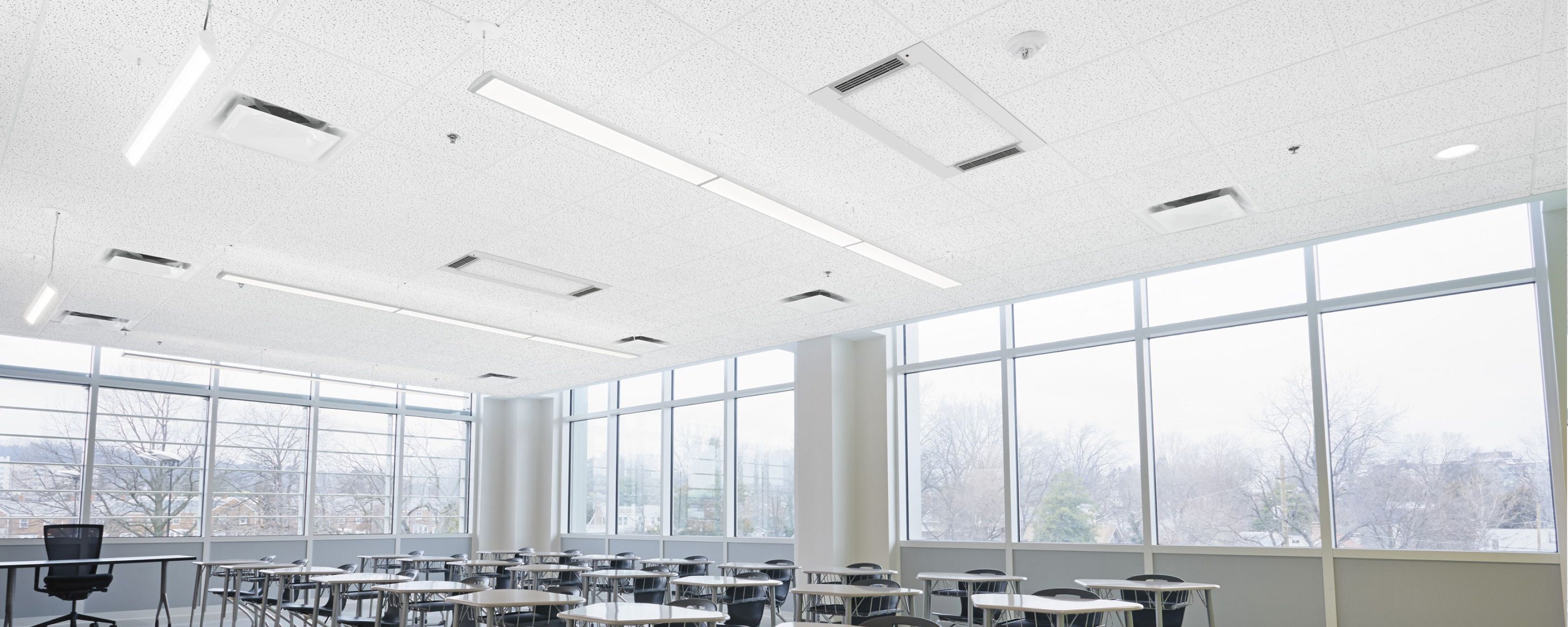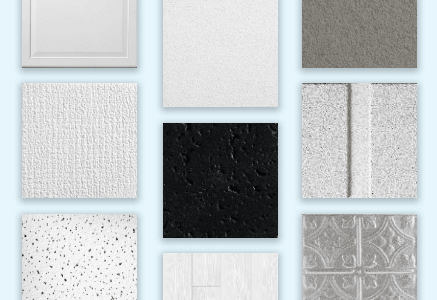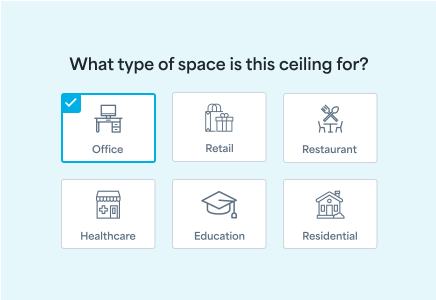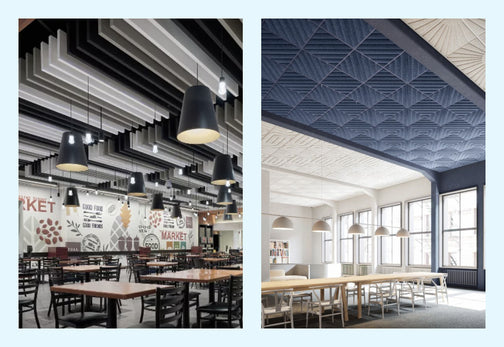How textured ceilings impact commercial spaces

In commercial interior design, ceiling tiles are often underestimated. Yet, they are critical to both the visual identity and functional performance of a space. Among the many attributes that define a ceiling tile, texture plays a central role, not only in aesthetics but also in acoustics, light reflectance, and durability. Armstrong Ceiling Solutions, a leader in the industry, offers a wide range of textured ceiling tiles that meet the evolving needs of modern commercial environments.
Understanding ceiling tile textures
Ceiling tile textures range from ultra-smooth to deeply fissured, each offering a distinct visual and tactile experience. Each product showcases a variety of textures, including:
Smooth and fine textures
Found in collections like CALLA® and Ultima Lay in and Tegular, these tiles offer a clean, drywall-like appearance that supports modern, minimalist aesthetics. Their uniform surface also enhances light reflectance and contributes to a brighter interior.
Tegular and dimensional textures
Tiles with stepped or dimensional edges, such as those in the LEDGES and CIRRUS Second Look line, add depth and architectural interest. These textures can be used to create dynamic ceiling patterns that break up visual monotony.
Fissured and patterned surfaces
More traditional textures, such as those in the FINE FISSURED® series, provide a classic look while offering effective sound absorption.
Ceiling texture and acoustical performance
One of the most important functions of a ceiling tile is its ability to manage sound. Acoustical performance is categorized using two key metrics:
Noise reduction coefficient (NRC)
Measures how much sound a tile absorbs. A higher NRC (closer to 1.00) means better sound absorption.

Visual showing how sound absorption is measured using NRC
Ceiling attenuation class (CAC)
Measures how well a tile blocks sound from traveling between rooms.

Visual showing how sound blocking is measured using CAC
Tiles with fine or smooth textures, such as CALLA® High NRC, can achieve NRC ratings as high as 0.90, making them ideal for open-plan offices, classrooms, and healthcare settings where speech clarity is essential.
Light reflectance and visual comfort
Texture also affects how light interacts with the ceiling surface. Smooth, white tiles typically offer the highest light reflectance (LR) values—often around 0.85 or higher—which means they reflect 85% of the light that hits them.
This can:
· Reduce the need for artificial lighting
· Lower energy costs
· Improve occupant comfort and productivity
High light-reflective ceilings are particularly beneficial in spaces like classrooms, offices, and healthcare facilities, where visual clarity and energy efficiency are priorities.
Durability and cleanability
The texture of a ceiling tile also influences its durability and maintenance requirements. Smooth tiles are generally easier to clean and more resistant to scratches and stains. Look for the “Cleanable” icon on ceiling tiles to indicate that they are:
· Washable and impact-resistant
· Mold and mildew-resistant
· Disinfectable
These attributes are especially important in high-traffic or high-humidity areas, where textured surfaces must withstand frequent cleaning and environmental stress.
Sustainability and material innovation
Texture can also be a byproduct of the materials used. Tiles are made from:
· Recycled PET felt (FELTWORKS)
Design flexibility with texture
Texture is not just about performance—it’s also a powerful design tool. Some systems allows designers to mix and match textures, shapes, and colors to create custom ceiling layouts. Options include:
· Geometric shapes like triangles, trapezoids, and hexagons
· Layered textures for added depth
· Color integration for branding or wayfinding
This flexibility enables architects and designers to use the ceiling as a canvas for creativity, while still meeting acoustical and lighting requirements.
Conclusion
Ceiling tile texture is a multifaceted attribute that influences everything from acoustics and lighting to durability and design expression. Kanopi ceilings offer a comprehensive range of textured tiles that empower commercial designers to create spaces that are not only visually compelling but also acoustically and environmentally optimized.
Whether you're designing a quiet library, a vibrant office, or a sterile healthcare facility, the right ceiling texture can elevate the space, both literally and figuratively.









 Thanks for subscribing!
Thanks for subscribing!